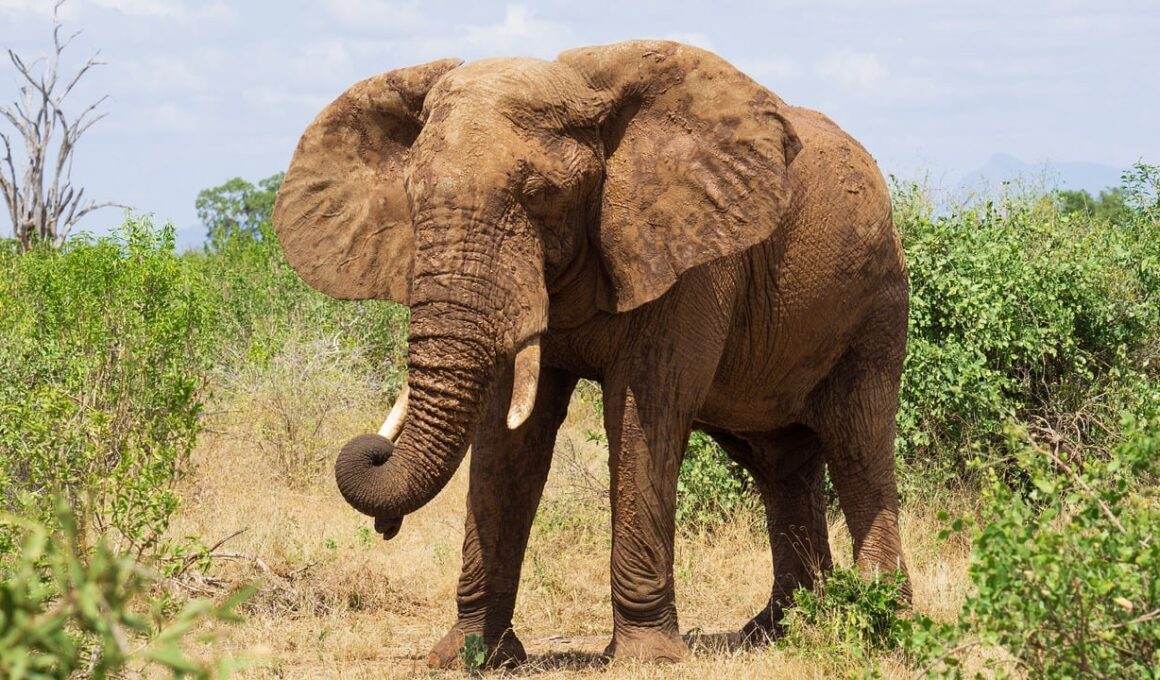Eco-Conscious Fitness Trends Supporting Wildlife Habitats
In recent years, the intersection of fitness and environmental consciousness has grown significantly. Individuals and organizations alike have recognized the importance of wildlife habitats and the need for sustainable practices within fitness trends. Eco-conscious fitness movements promote physical health alongside the health of our planet. As people engage in fitness, they are increasingly aware of how their activities impact wildlife. Many athletes are now advocating for wildlife-friendly spaces, making it crucial to support initiatives that protect habitats. Outdoor activities, such as hiking, running, or cycling, can lead to negative consequences if not done responsibly. Awareness campaigns are shedding light on how humans can minimize their ecological footprint. Moreover, purchasing eco-friendly products made from sustainable materials can support wildlife conservation efforts. It’s essential to understand that fitness practices should encourage biodiversity while ensuring that all creatures have suitable habitats. Additionally, the rise of wildlife-friendly events, such as charity runs benefiting conservation charities, illustrates this growing trend. These initiatives not only promote health but also foster community-driven efforts for environmental improvement and protection of wildlife. This multifaceted approach benefits both human fitness and wildlife conservation, ensuring a healthier planet.
Another aspect of this trend is the rise of eco-friendly workout gear. Brands are now innovating by utilizing sustainable materials that do not harm the environment. From biodegradable yoga mats to recycled apparel, these products significantly reduce waste. Moreover, the manufacturing processes are often more eco-conscious, leading to a lower carbon footprint. Many fitness enthusiasts are making these informed choices, opting for equipment that supports both their workouts and environmental sustainability. Additionally, personal trainers and fitness instructors are often encouraged to choose eco-friendly venues. Gyms and fitness studios are starting to integrate green technologies, such as solar power and water recycling systems. This shift not only reduces their environmental impact but also inspires clients to align their fitness practices with their values. Increased awareness among consumers has created demand for brands focusing on sustainability. Some companies even donate a portion of their profits to wildlife conservation organizations, thereby integrating purpose into their profitability. Fitness professionals also now emphasize the connection between outdoor physical activities and wildlife protection. They promote routines that support not only personal goals but also the preservation of natural habitats, fostering a deeper appreciation for wildlife.
The Role of Outdoor Activities in Conservation
Outdoor fitness activities play a vital role in promoting wildlife conservation. Many enthusiasts are seeking ways to enjoy nature while ensuring they protect it. Activities such as eco-tourism, hiking, and birdwatching often promote awareness about local ecosystems. These experiences not only provide fitness benefits but also educate participants about the importance of protecting wildlife. When individuals immerse themselves in natural environments, they develop a deeper understanding of habitat preservation. As they engage in these activities, they’re typically encouraged to follow the principles of “Leave No Trace.” By adhering to such principles, outdoor enthusiasts can enhance the positive impact of their activities on wildlife. This awareness leads to more considerate behaviors towards wildlife habitats and minimizes disturbances to local ecosystems. Innovative programs, including guided tours led by wildlife experts, further combine fitness with conservation education. They often promote trails and parks that are crucial for wildlife preservation, showcasing the beauty of nature. These adventures not only foster physical fitness but also strengthen the bond between participants and their local wildlife, generating a positive cycle of environmental stewardship and personal well-being.
To further support wildlife habitats, many fitness communities and organizations partner with conservation groups. These collaborations often lead to fundraising events dedicated to preserving natural areas. Such events range from charity runs to group workouts held in endangered or protected lands. These initiatives raise awareness and funds specifically for wildlife habitat restoration. Participants usually feel motivated knowing that their fitness efforts contribute to vital conservation work. On a local level, community clean-up days engaging fitness enthusiasts in local parks can improve habitats for various species. This model demonstrates how fitness groups can directly enhance habitats while also promoting camaraderie and community participation. Collectively utilizing fitness events creates a significant positive impact by raising funds for wildlife protection. Additionally, corporate sponsorships often provide financial support for these events, multiplying their capacity to fund conservation initiatives. As communities rally around these causes, the combined power of fitness and conservation efforts can lead to tangible changes. This reinforces the idea that physical activities can effectively intertwine personal health goals with the greater good of our environment and wildlife.
Mindfulness and Connection to Nature
The practice of mindfulness is gaining traction within fitness circles, linking personal health with environmental consciousness. Many fitness routines now encourage practitioners to connect deeply with nature. This connection fosters appreciation for the environments and wildlife we encounter during workouts. Mindful practices typically involve being present in the moment while engaging in outdoor activities, helping individuals recognize their impact on surroundings. Whether it’s through yoga sessions in parks or forest jogging, incorporating nature enhances the experience. This heightened awareness often prompts participants to advocate for wildlife conservation efforts actively. It bridges the gap between self-care and environmental stewardship, where taking care of oneself aligns with caring for the planet. Mindfulness can also promote sustainable behaviors by encouraging practitioners to choose eco-friendly products. When fitness enthusiasts prioritize this connection, they become conscious consumers, seeking to support brands that align with their values. These practices can foster community support systems, organizing campaigns and initiatives aimed at benefiting local wildlife habitats. By creating a culture that prioritizes environmental mindfulness, we can nurture a generation that values fitness and wildlife preservation.
In addition to fitness trends, educational programs are crucial in promoting wildlife conservation within active communities. Many gyms and fitness organizations now incorporate environmental education as part of their offerings. Members can participate in seminars, workshops, and events that emphasize the importance of protecting wildlife habitats. These educational initiatives foster understanding of ecosystems and the impact of human activities on wildlife. Furthermore, expert speakers often share insights on conservation efforts, connecting fitness with broader environmental themes. The insights gained through such educational programs empower individuals to be advocates for wildlife conservation in their daily lives. Offering resources, such as training manuals and guides, also strengthens the knowledge base of fitness participants. These resources often include tips on sustainable practices that can easily fit into regular routines. The integration of educational components into fitness programs aligns personal goals with conservation outcomes. Many participants express interest in volunteering for local wildlife organizations after being educated about the issues. Consequently, we begin to transform fitness spaces into environments promoting ecological wellness and pushing for wildlife conservation efforts to be at the forefront of community initiatives.
Conclusion: The Future of Fitness and Conservation
As we look to the future, the intersection of fitness and wildlife conservation is crucial. The trends supporting eco-conscious fitness are gaining momentum, paving the way for responsible practices worldwide. Engaging in eco-friendly workouts not only benefits human health but also nurtures our planet’s existing wildlife by preserving vital habitats. Continued efforts in this direction can vastly reshape the relationship between fitness enthusiasts and their environment. Communities are increasingly recognizing their right and responsibility to promote wildlife conservation through their fitness activities. Schools and universities are introducing curricula that teach students about the importance of conservation linked to wellness. Collaborations between fitness professionals and conservationists will lead to innovative solutions for protecting wildlife. These partnerships will enable communities to rally for joint efforts in fitness-based environmental initiatives. As fitness continues to evolve, it’s essential not to forget the intertwined destinies of our health and the health of our planet. By putting wildlife conservation at the center of fitness trends, we ensure a legacy that promotes a sustainable future for generations to come.
In conclusion, the shift towards eco-conscious fitness trends emphasizes a holistic approach to health. The promotion of wildlife habitats and conservation initiatives has transformed fitness into a means of positive environmental influence. This growing movement showcases the potential of fitness communities to advocate for change while improving health. Embracing sustainable practices within fitness not only responds to consumer demand but ignites a broader commitment to preserving nature. As these trends continue to shape the future, individuals will increasingly recognize the important relationship between taking care of oneself and taking care of the planet. Each step taken during exercise can echo sentiments of support for wildlife. By choosing eco-friendly practices, participating in conservation initiatives, and fostering connections with nature, fitness enthusiasts can create ripples of change. This impact will be felt beyond individual pursuits, extending to wildlife and habitat preservation. Sustainability, mindfulness, and community engagement are foundational elements that promote both well-being and environmental stewardship. Ultimately, committing to an eco-conscious fitness lifestyle means championing a healthier planet. The potential to inspire change lies within each individual, reminding us that fitness can be a powerful tool for conservation.


